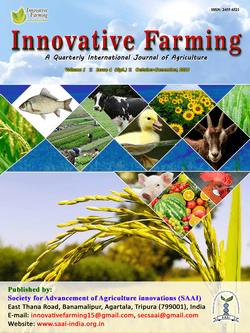
Yield Maximization of Pigeonpea through Innovative Technology of System of Pigeonpea Intensification - A Success Story
R.K. Singh*
Krishi Vigyan Kendra, Panna, Jawaharlal Nehru Krishi Vishwa Vidyalaya, Jabalpur, India
B.S. Kirar
Krishi Vigyan Kendra, Panna, Jawaharlal Nehru Krishi Vishwa Vidyalaya, Jabalpur, India
DOI: NIL
Keywords: Transplanting, yield, net return, B:C ratio
Abstract
Pigeonpea being is kharif crop and their yield potential was affected by climate aberrations. In this situation plant population was not maintained/ survived until maturity as per recommendation due to uncertainty / heavy precipitation of rainfall. Under such circumstance maintaining adequate number of plants by transplanting of young seedling of pigeonpea in presence of both a biotic and biotic stresses. Counter of this problems and exploit full potential through certain crop contingencies including transplanting of pigeonpea seedling in main field so as to maintain adequate plant population for compensating yield loss during Kharif season. Resulted that higher yield, net return and cost benefit ration was found 15.2 q/ha, Rs.29340, BC ratio 1:2.5 respectively under transplanting of pigeonpea seedling as compared farmers practices 9.6 q/ha, Rs. 15120, BC ratio 1.1.96 respectively. Farmers responded positively to the results of the demonstration and those who participated in the demonstration trainings were willing to adopt System of Pigeonpea Intensification. And scientist advises to adopt this module for small and marginal farmers with less land to take advantage of this method as this method can yield dramatic results with less number of seeds and saving of water and nutrients.
Downloads
not found
